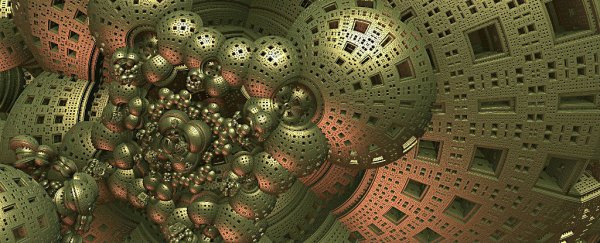Just last month, physicists made the best case yet for why time crystals - hypothetical structures that have movement without energy - could technically exist as physical objects.
And now, four years after they were first proposed, scientists have managed to add a fourth dimension - the movement of time - to a crystal for the first time, giving it the ability to act as a kind of perpetual 'time-keeper'.
First proposed by Nobel-Prize winning theoretical physicist Frank Wilczek back in 2012, time crystals are hypothetical structures that appear to have movement even at their lowest energy state, known as a ground state.
What's been puzzling physicists for decades is that strange things happen when certain objects such as crystals and magnets enter their ground state - they appear to violate a fundamental law in physics called time-translation symmetry, and end up with what's referred to as asymmetrical ground states.
Consider a magnet - each one has a north and a south end. It's unclear how a magnet 'decides' which end will be north and which will be south, but the fact that it has a north and a south end means it won't look the same on both ends - its naturally asymmetrical.
Another example of a physical object with an asymmetrical ground state is a crystal.
Crystals are known for their repeating structural patterns, but somehow they appear to be the same when viewed from certain directions, but not others. So like magnets, depending on where you observe a crystal in space, it will look different.
For something to have an asymmetrical ground state, it has to achieve this asymmetry while standing still - no energy involved.
With this in mind, Wilczek proposed that it might be possible to create an object that achieves an asymmetrical ground state not across space like ordinary crystals or magnets - but across time.
As we explained last month, in very basic terms, Wilczek envisioned an object that could achieve everlasting movement while in its ground - or zero-energy - state by periodically switching between states over and over again.
He said it could be possible to construct such an object by putting ordinary crystals in a low temperature superconductor, because crystals naturally align themselves at low temperatures.
"[I]t seemed reasonable to assume that the atoms in such a crystal could conceivably move or rotate and then return to their natural state continually, as crystals are wont to do as they seek a lowest energy state," Bob Yirka explained for Phys.org.
Now a team from the University of Maryland have tried out such an experiment, and it looks like it actually works.
As MIT Technology Review reports, in theory, the process is fairly simple - you just need to create a quantum system, where you 'hold onto' a bunch of ions in the shape of a ring, and then cool them to their lowest energy state.
Then you could see if the system breaks symmetry - the laws of physics predict that the ring will stay perfectly stationary with no energy for movement, but if time symmetry were broken at this ground state, then the ring could vary, or rotate, periodically in time.
"Of course, it would never be possible to extract energy from this motion - that would violate the conservation of energy," says Tech Review. "But the temporal symmetry-breaking would manifest itself in this repeating motion in time, just as spatial symmetry-breaking manifests itself as repeating patterns in space."
If things were as simple as we just described, Wilczek would have built such a system back in 2012. But there's just one problem - because quantum particles tend to blink in and out of positions in space, they aren't influenced by time-dependent variables, meaning they don't evolve over time.
The first step was for the University of Maryland to find a quantum system that was.
They did this by chaining together a line of ytterbium ions with spins that interact with each other, and holding them in an out-of-equilibrium state. This forced the quantum ions to become 'localised' in a specific space, and therefore influenced by time.
Using a laser, the team could then start changing the spin of specific ytterbium ions, and by flipping the spin of one ion, it caused the next one to flip, and so on down the chain, until every ion was oscillating.
Once the laser had been used to set the first one off, the oscillation was perpetual, and over time, the researchers noticed something strange.
"These guys discovered that after allowing the system to evolve, the interactions occurred at a rate that was twice the original period. Since there is no driving force with that period, the only explanation is that the time symmetry must have been broken, thereby allowing these longer periods. In other words, [they] had created a time crystal."
To be clear, we're not talking about perpetual motion machines here, because by definition, there is no energy in these systems.
But it does demonstrate that time crystals can occur in a real, physical system, and the team says that they could help us solve the problem of quantum memory - that is, how to retain information in the future generation of quantum computers.
The researchers have submitted their results to the pre-print website arXiv.org, to be picked over by their physicist peers, so we'll have to wait and see if their experiment can be independently replicated. But if it can, we're only just beginning to realise the potential of the incredibly strange time crystal.
